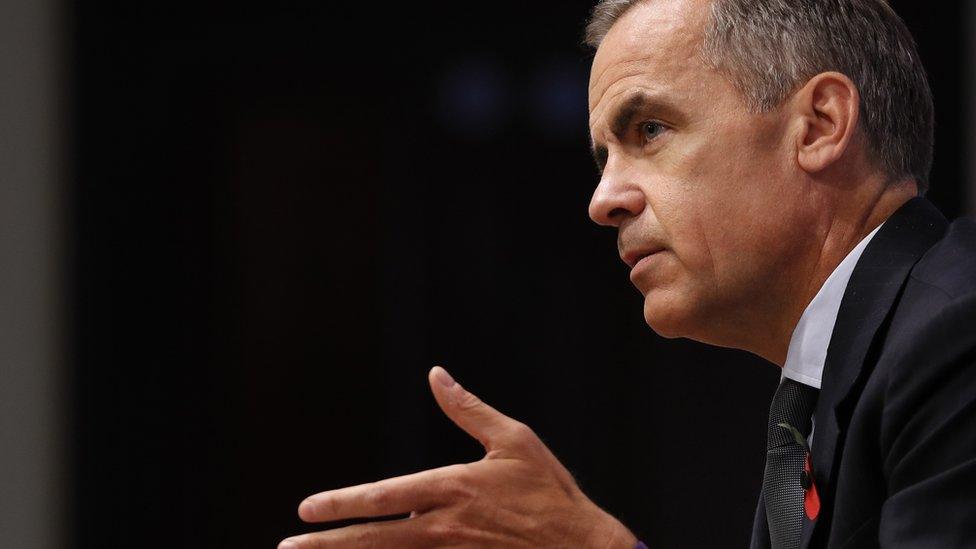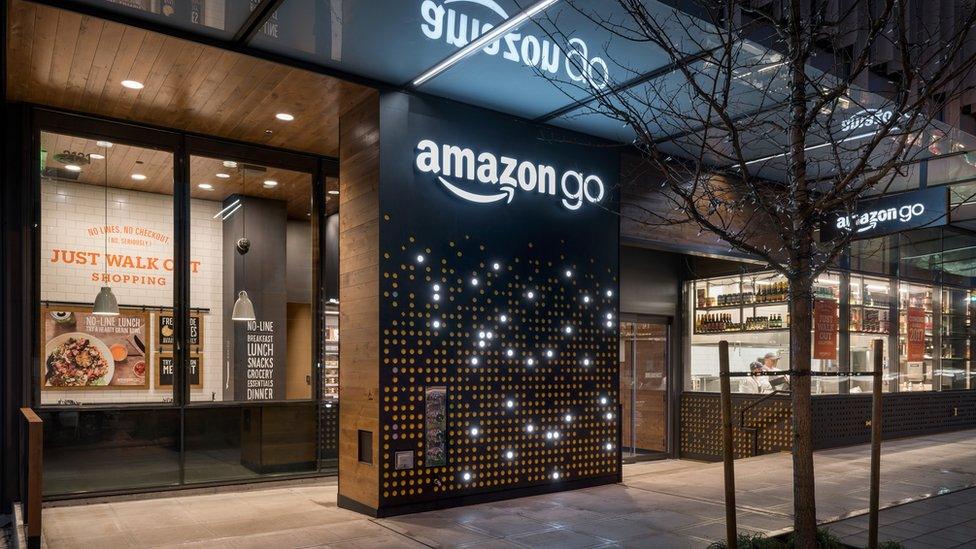Seamless shopping and the future of work
- Published

A man walks into a shop, grabs a sandwich off a shelf then walks straight out.
A woman browses the selection of ready meals, puts one in her handbag and leaves. Scenes from a viral video, external - not about shoplifting but about Amazon's vision of the future of retailing.
It shows a shop which, says Amazon, is fitted out with the sort of technology which is used in self-driving cars - computer vision, sensor fusion, and deep learning.
The customer taps in with a smartphone on arrival, meaning the shop understands which products they have taken and later bills them via an app which has their credit card details.
Just Walk Out Shopping, as Amazon calls it, sounds like a concept for the 2020s - but the first store opens in Seattle in January 2017.
Rethinking retail
A few things strike me about the video and the oohs and aahs of delight it has provoked from the tech community.
Firstly, it does illustrate what an imaginative and ambitious company Amazon is, ready to rethink a vast industry and move at a pace which could leave the incumbents wheezing helplessly as they are left behind.
But stop one moment and ask an important question: just because a technology is feasible, does that make it either financially viable or socially desirable?
Fitting an entire shop with the technology to scan goods and people, then tagging every single product sounds expensive. With margins for food retailers wafer thin, that investment could take years to pay off.
Then there are those pesky shoppers. Of course, there will be keen early adopters - like those people you see roaming the supermarket with a scanning device, then paying at roughly the same speed as the rest of us who line up as normal at the checkout.

But the problem is that the Amazon Go outlets will welcome solely these tech savvy folks - account holders comfortable with paying automatically via their smartphone.
Everyone else who enters the store will be either unable to pay - or a shoplifter. Indeed, the technology may have to identify any person entering the store without a smartphone connected to the Amazon app as a potential thief.
Still, imagine a future where this idea takes hold and all shops are "shop and go".
Then work out how many retail checkout jobs could be wiped out - 3.5 million in the US alone according to one estimate. Add in deliveries by drone or driverless trucks, and Amazon appears to pose a threat to whole swathes of traditional jobs.
Robo-workers
This is the kind of danger the Bank of England governor was talking about yesterday when he warned that 15 million jobs could be at risk in the UK from the advance of the robots.
Mark Carney appeared to be quoting an Oxford University study, external now thought to be far too gloomy about the threat to jobs - the OECD reckons, external the impact of automation will be about one-fifth as high as the Oxford researchers predicted.
Still, all the forecasters agree that, for all the talk of white-collar professions being threatened by the robots, it is low-skilled workers who are in most danger of being automated out of a job.

Bank of England Governor Mark Carney has warned that millions of jobs might be at risk from automation
Amazon will point out that it has been a big creator of jobs, with a global workforce now approaching 270,000.
But just as Uber's army of drivers could be automated out of existence by self-driving cars, many of the workers at Amazon will be vulnerable as technology marches on.
In Seattle and London, a future where your taxi drives itself and you can walk out of a store without interacting with a checkout assistant - or even an annoying machine - sounds very attractive.
In places which rely on low-skilled work, however, that kind of tech "utopianism" risks making people even more angry about the way their world is changing.
- Published5 December 2016

- Published4 December 2016

- Published29 February 2016
